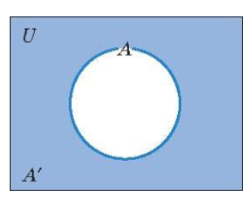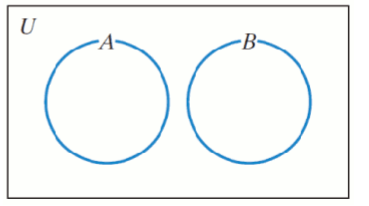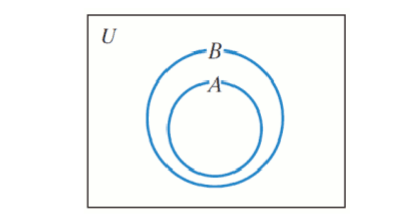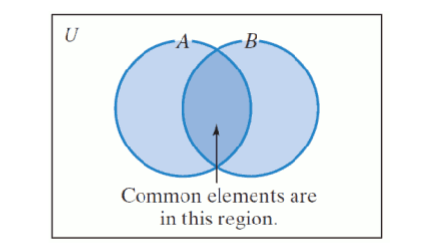Unit 1 | Chapter 2: Set Theory
1/40
Name | Mastery | Learn | Test | Matching | Spaced |
|---|
No study sessions yet.
41 Terms
Set
A collection of objects whose contents can be clearly determined.
Elements/members
The objects in a set.
Word description
A method for representing sets
Can designate or name a set
Ex: Set W is the set of days of the week.
Roster method
A method for representing sets
Lists the members of a set
Ex: W= {Monday, Tuesday, Wednesday, Thursday, Friday, Saturday, Sunday}
Set-builder notation
A method for representing sets
Explains the properties that its members must satisfy
Ex: W = {x | x is a day of the week}
Empty/null set
The set that contains no elements.
Is a subset of every set.
Is ⊆ B, for any set B.
Is ⊂ B, for any set B other than the empty set.
{ } or Ø
Notation used to indicate that the set contains no elements.
∈
Notation used to indicate that an object is an element of a set.
It replaces the words, "is an element of."
∉
Notation used to indicate that an object is not an element of a set.
It replaces the words, "is not an element of."
The set of natural numbers
N={1, 2, 3, 4, 5, ...}
Ellipsis
The three dots after an element that indicates that there is no final element and that the list goes on forever unless shown to have an end.
≤ and <
"Less than or equal to" and "Less than"
≥ and >
"Greater than or equal to" and "Greater than"
Cardinal number
The number of set A is the number of distinct elements in set A.
Represented by n(A), read "n of A."
Is not changed by repeating elements
Equivalent set
Set A and Set B contain the same number of elements.
n(A) = n(B).
If a set is equal, it is automatically equivalent.
then A is equivalent to B: n(A) = n(B).
If set A and set B can be placed in a one-to-one correspondence,
then A is not equivalent to B: n(A) ≠ n(B).
If set A and set B cannot be placed in a one-to-one correspondence,
Finite set
A set whose cardinality is 0 [n(A) = 0, A is the empty set] or a natural number.
Has a beginning and an end.
Infinite set
A set whose cardinality is not 0 or a natural number.
Has a beginning but no end.
Equality of sets
Set A and Set B contain exactly the same elements, regardless of order or possible repetition of elements.
Expressed as A = B.
If a set is equal, it is automatically equivalent.
Subset of a set
If every element in set A is also an element in set B.
A ⊆ B.
Every set is a subset of itself.
Not a subset of a set
If there is at least one element of set A that is not an element of set B.
A ⊄ B.
Proper subset
If set A is a subset of set B and sets A and B are not equal (A≠B).
Expressed as A ⊂ B.
Number of subsets
The number of distinct subsets of a set
n elements, 2n.
As we increase the number of elements in the set by one, the number of subsets doubles.
Number of proper subsets
The number of distinct proper subsets of a set with n elements is 2n - 1.
Universal set
A general set that contains all elements under discussion.
U
Represented by a rectangle
Subsets within the universal ser are depicted by circles, or sometimes ovals, or other shapes.

John Venn
1843-1923
Created Venn Diagrams to show the visual relationship among sets.
Disjoint sets
Two sets that have no elements in common.

Proper subsets
All elements of set A are elements of set B.

Equal sets
If A = B, then A ⊆ B and B ⊆ A.

Sets with some common elements
If set A and set B have at least one element in common, then the circles representing the sets must overlap.

Complement of a set
The set of all elements in the universal set that are not in A. Symbolized by A'.
A ' = {x | x ∈U and x∉A}.
If you add it to its set, you get the universal set.
Intersection of sets
The set of elements common to both set A and set B.
And
A∩B = {x | x∈A and x∉B}.
A∩B
Union of sets
The set of elements that are members of set A or of set B or of both sets.
A∪B.
A∪B = {x | x∈A or x∈B}.
Or
A
A ∪ Ø = ?
Ø
A ∩ Ø = ?
always begin by performing any operations inside the paretheses.
When performing set operations with parentheses,
its best to start with the innermost part and move outward.
When filling a Venn diagram,
Or
Refers to the union of sets.
And
Refers to the intersection of sets.
n(A ∪ B) = n(A) + n(B) - n(A ∩ B)
Formula for the cardinal number of the union of two finite sets